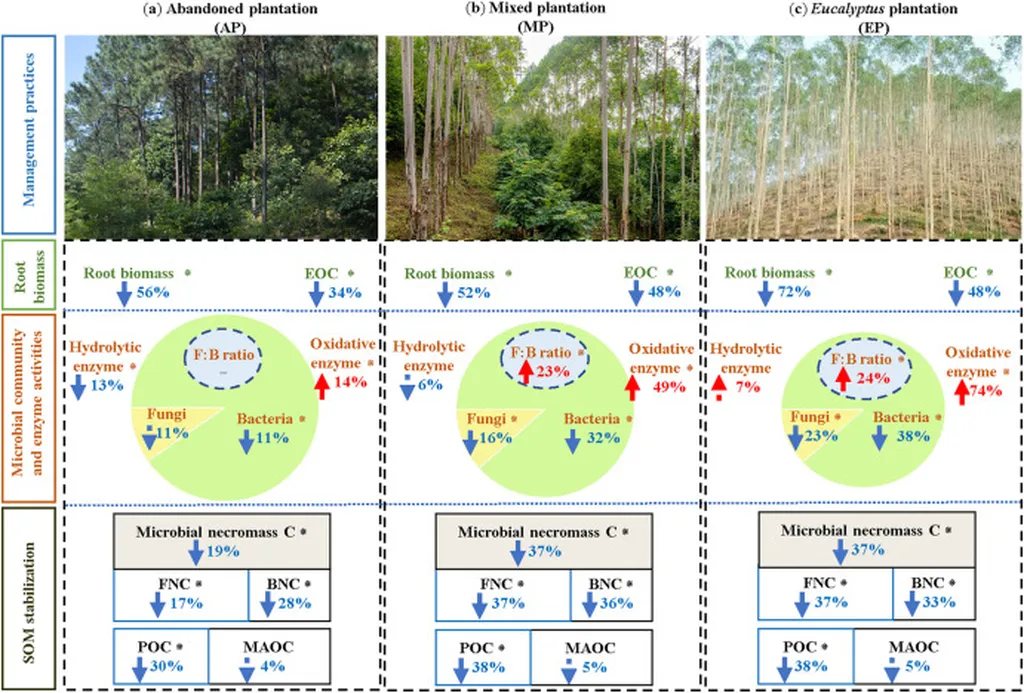In the heart of Eritrea, a critical study is shedding light on the often-overlooked impacts of land use changes on soil organic carbon stocks, with significant implications for the energy sector and climate change mitigation efforts. Led by T. Tesfay, a researcher affiliated with the Peoples’ Friendship University of Russia named after Patrice Lumumba and Hamelmalo Agricultural College, this investigation delves into the consequences of converting natural forests into agricultural lands, offering insights that could reshape our approach to sustainable land management and carbon sequestration.
The study, published in the Bulletin of the Dokuchaev Soil Science Institute, a prominent Russian journal, reveals stark differences in soil organic carbon stocks across various land use types. By analyzing soil samples from natural forests, continuous cropping, shifting cultivation, and grazing lands around Adi Hakin in the Laelay Gash region, Tesfay and his team uncovered a troubling trend: the conversion of natural forests into agricultural lands leads to substantial losses in soil organic carbon.
“Our findings indicate that the conversion of natural forests into continuous cropping, grazing, and shifting cultivation results in significant soil organic carbon losses,” Tesfay explained. “This not only depletes soil fertility but also contributes to atmospheric CO2 levels, exacerbating climate change.”
The data is compelling. Natural forests, which act as vital carbon sinks, boast the highest soil organic carbon stocks at 51.69 Mg·ha-1. In stark contrast, continuous cropping lands, which are prevalent in many agricultural regions, show the lowest stocks at 21.23 Mg·ha-1. Grazing and shifting cultivation lands also exhibit lower carbon stocks, at 22.74 and 23.57 Mg·ha-1, respectively.
The implications for the energy sector are profound. As the world grapples with the need to reduce carbon emissions, understanding and mitigating soil carbon losses becomes crucial. “The conversion of natural forests into agricultural lands not only impacts local ecosystems but also has global repercussions,” Tesfay noted. “By conserving natural forests, we can enhance soil carbon sequestration and reduce atmospheric CO2 levels, contributing to global climate change mitigation efforts.”
This research underscores the urgent need for sustainable land use practices that prioritize soil health and carbon sequestration. For the energy sector, this means investing in technologies and practices that support soil carbon retention, such as agroforestry and regenerative agriculture. It also highlights the importance of policies that incentivize the conservation of natural forests and promote sustainable agricultural practices.
As we move towards a more sustainable future, the insights from this study serve as a clarion call for action. By addressing soil organic carbon losses, we can mitigate climate change, enhance soil fertility, and support sustainable agricultural practices. The findings from Eritrea offer a blueprint for global action, emphasizing the critical role of soil health in our collective efforts to combat climate change and ensure a sustainable future for all.
In the words of Tesfay, “Conserving natural forests is not just about protecting biodiversity; it’s about safeguarding our climate and ensuring the long-term sustainability of our agricultural systems.” This research is a stepping stone towards a more sustainable and resilient future, one where the health of our soils is at the forefront of our environmental and energy strategies.

